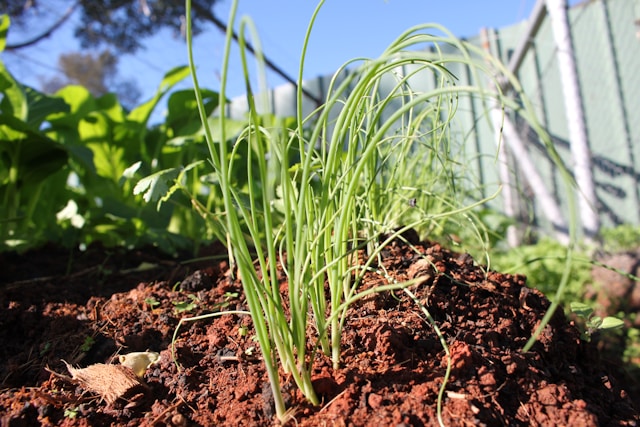A thriving lawn begins with healthy soil. Think of your soil as the foundation of your yard—when it’s rich in nutrients, teeming with beneficial organisms, and well-structured, your grass has everything it needs to grow strong and resilient. Building soil health organically is not only better for your lawn but also safer for your family, pets, and the environment.
In this guide, we’ll explore why soil health is essential, how to assess your soil’s condition, and the best organic practices to improve and maintain it over time. Let’s dig in!
Why Soil Health is Crucial for Your Lawn
Healthy soil does so much more than just support grass growth. It serves as a living ecosystem that provides the nutrients, water, and air your lawn needs to thrive. Here’s why it matters:
- Nutrient Availability: Soil rich in organic matter and nutrients promotes robust grass growth without the need for synthetic fertilizers.
- Water Management: Healthy soil retains moisture while allowing excess water to drain, preventing both drought stress and waterlogging.
- Natural Defense System: A lawn with healthy soil is better equipped to resist weeds, pests, and diseases.
Unlike synthetic fertilizers, which can deplete soil over time, organic practices focus on feeding the soil itself. This creates a self-sustaining system that benefits your lawn for years to come.
Assessing Your Lawn’s Soil Health
Before you can improve your soil, you need to understand its current condition. Here’s how to assess soil health:
- Conduct a Soil Test: A soil test will reveal critical information, such as pH levels, nutrient deficiencies, and organic matter content. Aim for a pH between 6.0 and 7.0 for most lawns.
- Inspect the Soil’s Texture: Healthy soil should feel crumbly and light, not compacted or sandy.
- Check for Drainage Issues: Watch how water behaves after rain or irrigation—healthy soil absorbs water rather than pooling on the surface.
- Smell the Soil: Healthy soil smells earthy and fresh, while poor soil often smells sour or has no smell at all.
These observations will give you a clearer picture of what your lawn needs to thrive.
Organic Practices to Build Soil Health
Improving soil health organically doesn’t require expensive tools or chemicals. With consistency and care, you can transform your soil naturally using these methods:
1. Add Organic Matter
Organic matter, such as compost, aged manure, or shredded leaves, is the foundation of healthy soil. It improves soil structure, adds nutrients, and boosts water retention. Spread a thin layer of compost over your lawn (called topdressing) once or twice a year to nourish the soil.
2. Aerate Your Lawn
Compacted soil can prevent air, water, and nutrients from reaching grass roots. Aeration—removing small plugs of soil—helps alleviate compaction and creates pathways for essential resources to penetrate.
3. Use Natural Fertilizers
Opt for slow-release, organic fertilizers like bone meal, blood meal, or kelp. These fertilizers enrich the soil while avoiding the harsh effects of synthetic chemicals. Compost tea is another excellent option to boost microbial activity in the soil.
4. Plant Cover Crops
During the off-season, plant cover crops like clover or rye grass. These crops add organic matter, fix nitrogen in the soil, and protect against erosion. Once the growing season returns, they can be mowed and incorporated into the soil.
5. Mulch Grass Clippings
Leave grass clippings on your lawn after mowing to act as a natural fertilizer. The clippings decompose quickly, returning nutrients like nitrogen to the soil.
6. Encourage Microbial Activity
Healthy soil is alive with microbes that break down organic matter and release nutrients for plant uptake. Add compost or organic amendments to feed these beneficial organisms and keep your soil ecosystem thriving.
Long-Term Maintenance for Organic Soil Health
Building healthy soil isn’t a one-time task—it’s a continuous process. Here’s how to maintain soil health over time:
- Test Regularly: Conduct soil tests every 1–2 years to monitor nutrient levels and pH.
- Topdress Annually: Add a thin layer of compost or organic matter each year to replenish nutrients.
- Avoid Overwatering: Overwatering can wash away nutrients and encourage soil compaction. Water deeply but infrequently to maintain a balanced moisture level.
- Mow High: Cutting your grass too short stresses the lawn and reduces its ability to develop a strong root system.
By incorporating these long-term habits into your lawn care routine, you’ll ensure your soil remains healthy and fertile.
Benefits of Healthy Soil
The results of organic soil health practices go far beyond a greener lawn:
- Stronger, Resilient Grass: Your lawn will better withstand stress from drought, pests, and foot traffic.
- Reduced Dependency on Chemicals: Healthy soil requires fewer inputs, saving you money and reducing environmental impact.
- Improved Biodiversity: Healthy soil supports a thriving ecosystem of microorganisms and earthworms, which further enrich the soil.
Building a Lawn That Thrives Naturally
Healthy soil is the cornerstone of organic lawn care. By nurturing your soil with compost, aeration, and natural fertilizers, you’re setting the stage for a lawn that is not only beautiful but also sustainable. Organic practices take time and consistency, but the results—a thriving, resilient lawn—are worth the effort.
Ready to improve your lawn’s soil health organically?
Contact GreenStripe today for professional soil testing, organic lawn care services, and personalized advice. Let’s work together to create a lawn that’s as healthy as it is beautiful!



